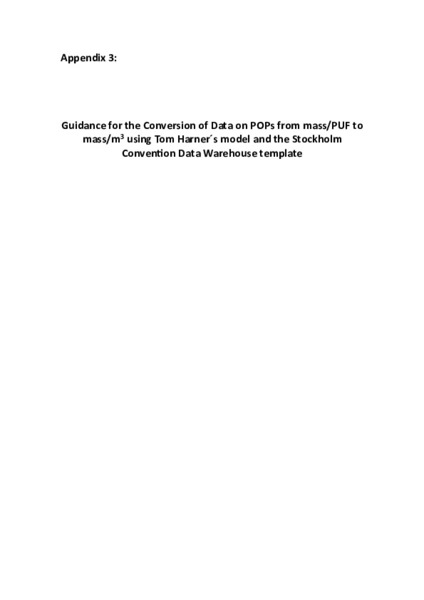| dc.contributor | Industry and Economy Division | en_US |
| dc.contributor.author | United Nations Environment Programme | en_US |
| dc.contributor.author | Esteban Abad Spanish National Research Council | en_US |
| dc.contributor.other | Estellano, Victor Hugo | en_US |
| dc.coverage.spatial | Global | en_US |
| dc.date.accessioned | 2024-09-25T04:45:19Z | |
| dc.date.available | 2024-09-25T04:45:19Z | |
| dc.date.issued | 2018-04 | |
| dc.identifier.uri | https://wedocs.unep.org/20.500.11822/46308 | |
| dc.description | Ambient air is an important matrix for the effectiveness evaluation of the Convention because it has a very short response time to changes in atmospheric emissions and is a relatively well-mixed environmental medium and includes both chemicals in gaseous form as well as chemicals partitioned onto particles (UNEP, GMP guidance 2019). The objective of the ambient air sampling networks under the SC Global Monitoring Plan (GMP) is to obtain representative data for assessing baselines, changes over time and space and the regional and global transport of Persistent Organic Pollutants (POPs). | en_US |
| dc.format | pdf | en_US |
| dc.language | English | en_US |
| dc.relation.ispartof | Training Report: Capacity Building on POPs Monitoring in Biota and Abiotic Matrices in the Africa, Asia, Pacific and GRULAC Regions | |
| dc.rights | Public | en_US |
| dc.subject | persistent organic pollutant | en_US |
| dc.subject | data collection | en_US |
| dc.title | Appendix 3: Guidance for the Conversion of Data on POPs from Mass/PUF to Mass/m3 using Tom Harner´s Model and the Stockholm Convention Data Warehouse Template | en_US |
| dc.type | Reports, Books and Booklets | en_US |
| wd.identifier.sdg | SDG 3 - Good Health and Well-being | en_US |
| wd.topics | Chemicals and Pollution Action | en_US |
| wd.identifier.pagesnumber | 12 p. | en_US |


